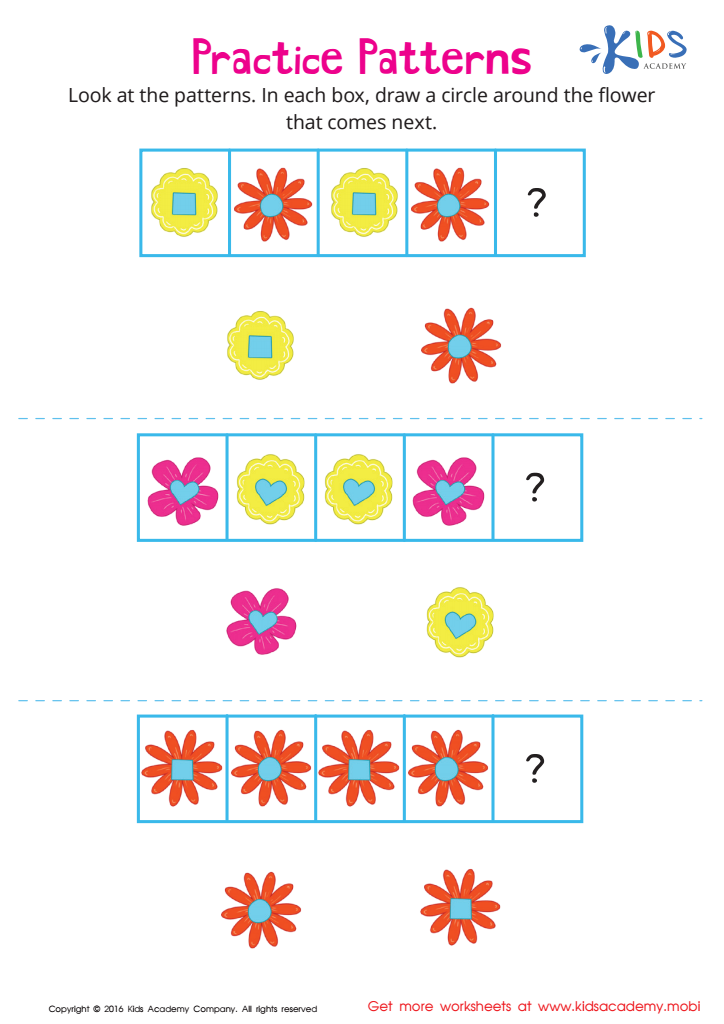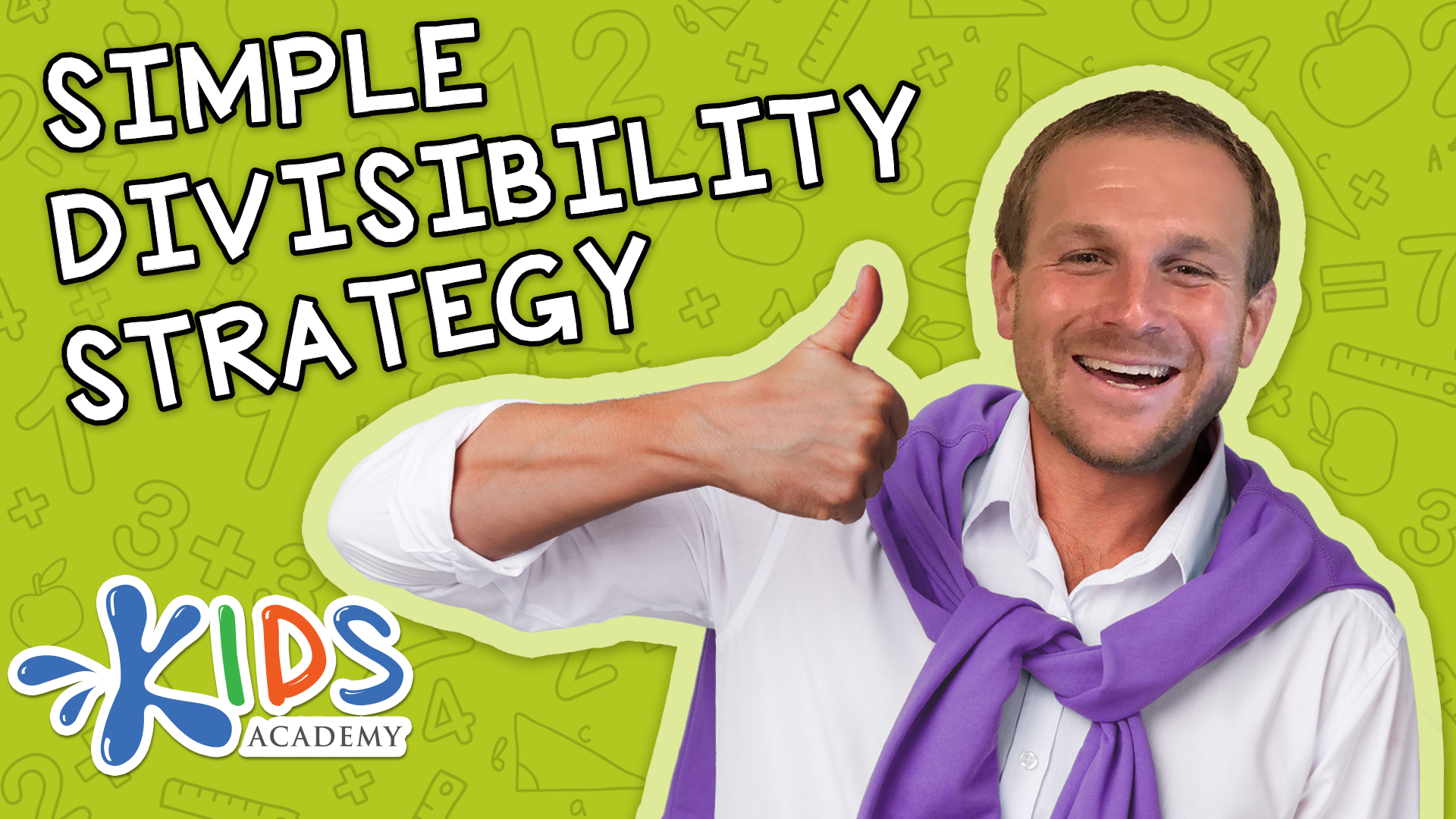Patterns Worksheets for Ages 4-8
6 filtered results
-
From - To
Discover our engaging Patterns Worksheets for ages 4-8, designed to ignite children’s creativity and enhance their critical thinking skills! These printable resources cater to early learners by introducing various patterns, including shapes, colors, and numbers. Through fun exercises and visually appealing activities, kids will master pattern recognition, sequencing, and prediction while enjoying interactive learning. Our worksheets align with early childhood education standards, making them perfect for both classrooms and at-home learning. Encourage your child’s love for math and logic with our easy-to-follow patterns worksheets that are perfect for every budding mathematician. Get started today and watch their skills blossom!
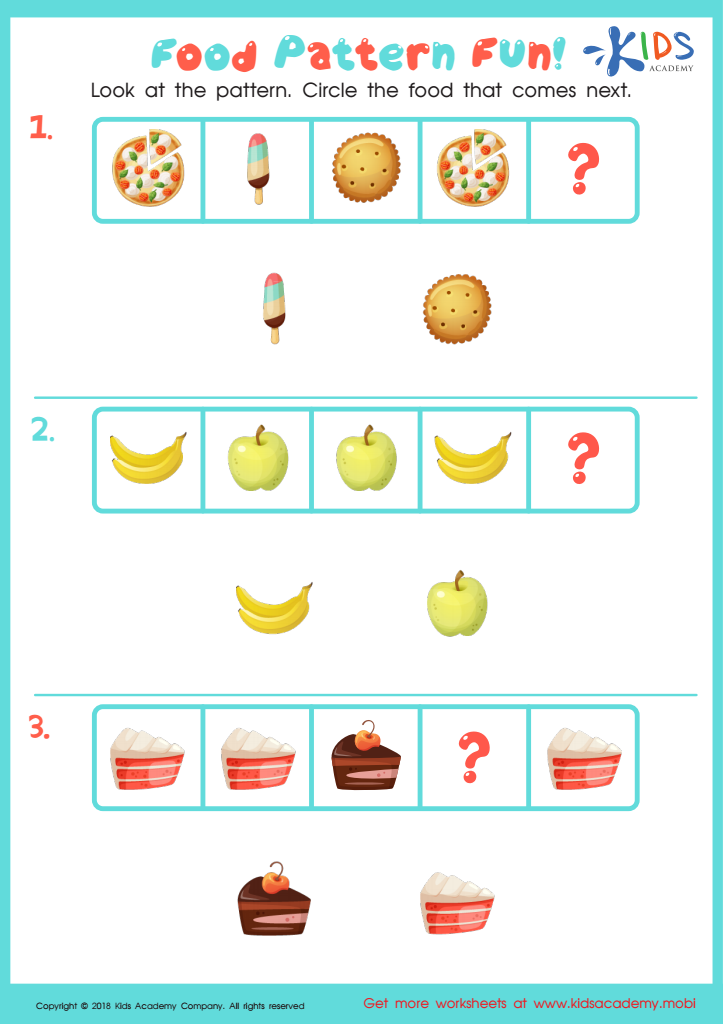

Food Pattern Fun Worksheet
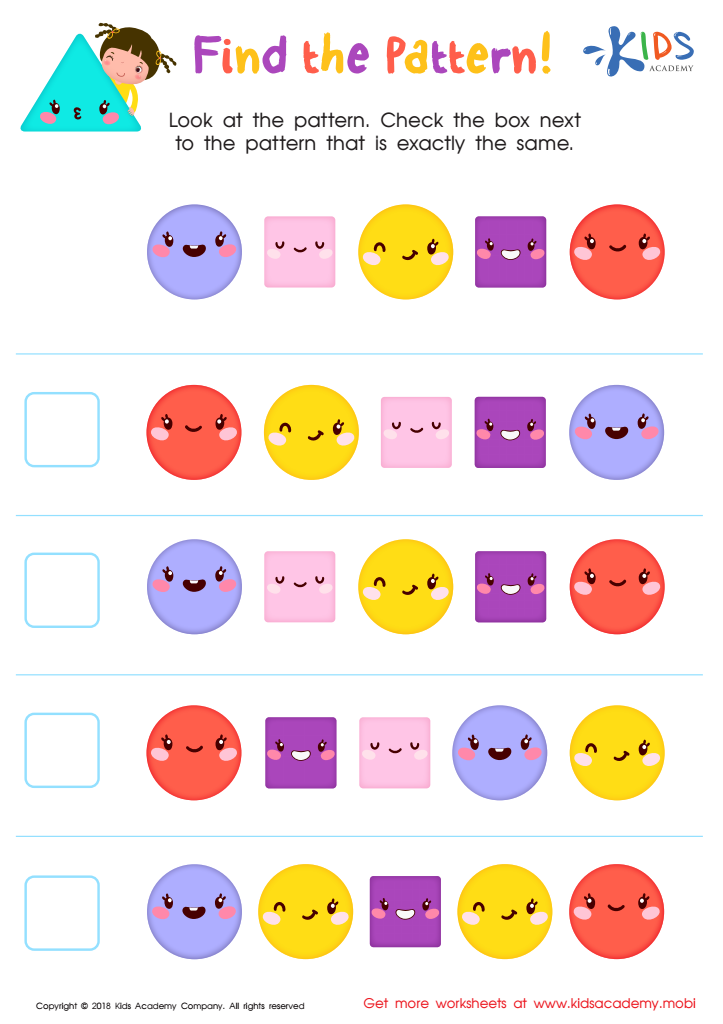

Find the Pattern Worksheet
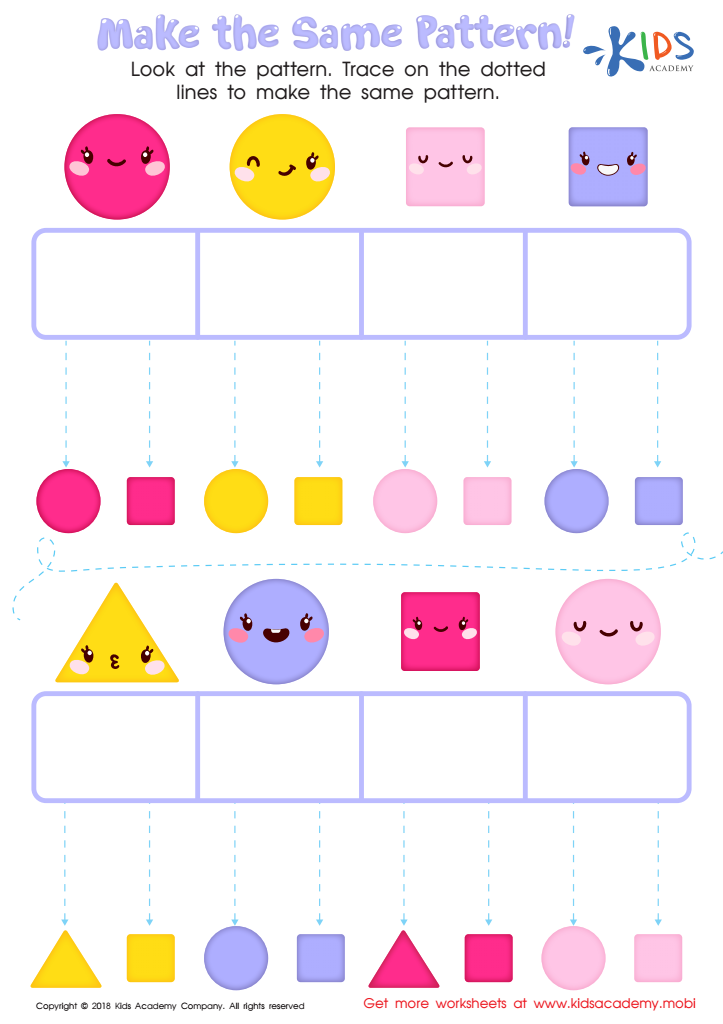

Make the Same Pattern Worksheet
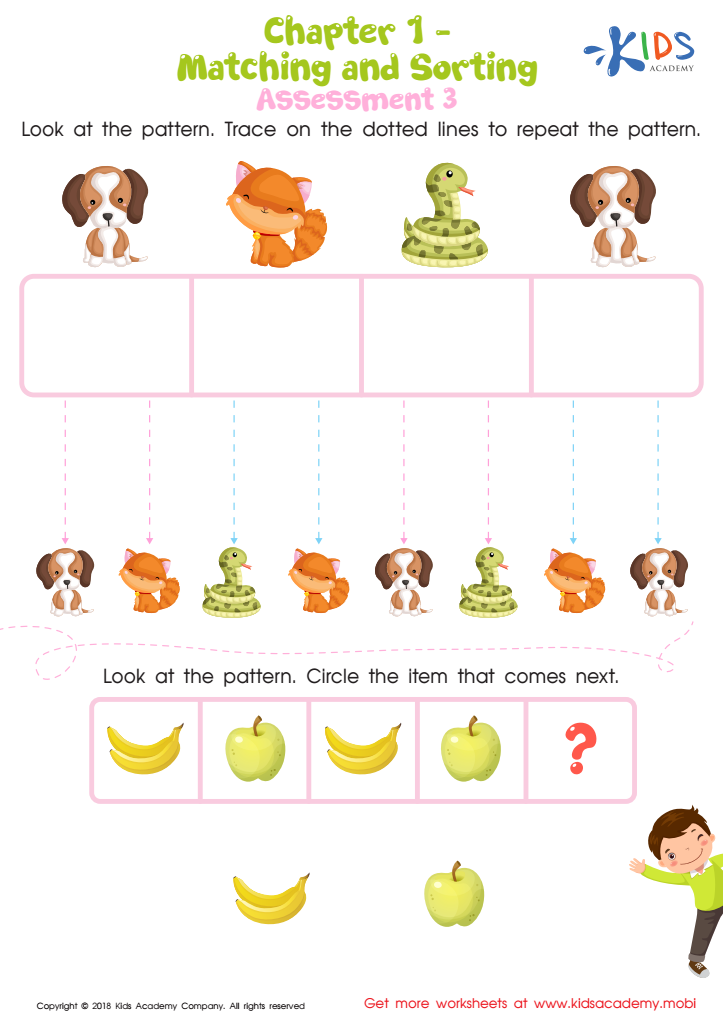

Matching and Sorting for Preschool: Assessment 3 Worksheet
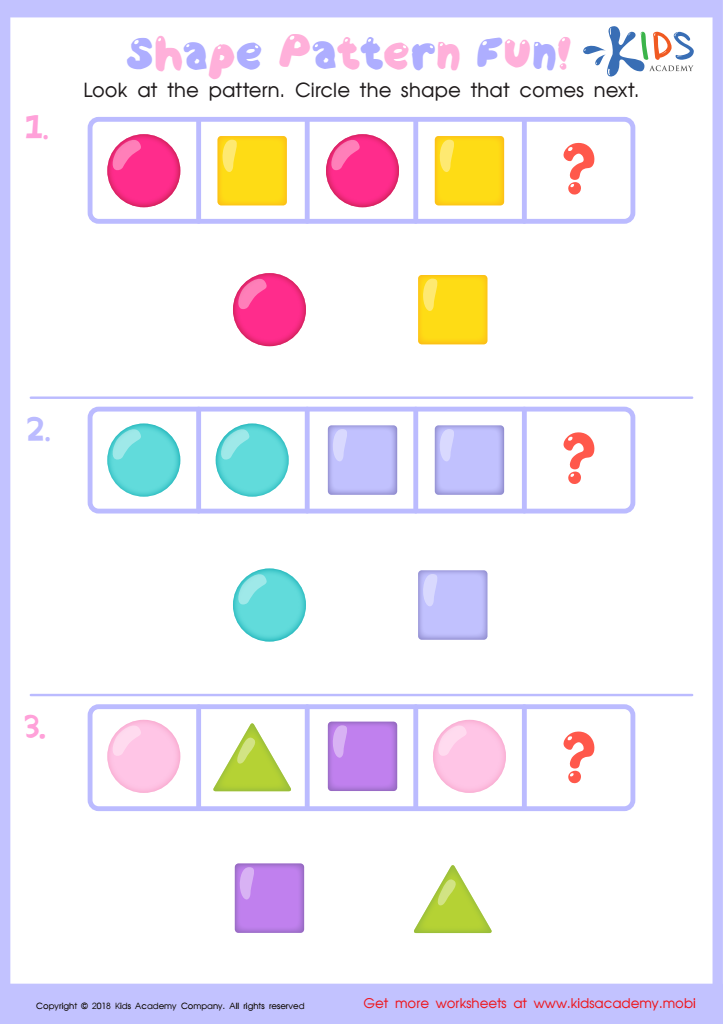

Shape Pattern Fun Worksheet
Patterns are fundamental building blocks of early childhood education that can significantly enhance a child's cognitive development. For children aged 4 to 8, understanding patterns fosters critical thinking skills, promotes problem-solving abilities, and lays the groundwork for more advanced mathematical concepts. Recognizing and creating patterns—whether with shapes, colors, numbers, or sounds—teaches children to observe relationships and make predictions, which are essential skills for everyday life and academic success.
Additionally, engaging with patterns supports language development. As children describe what they observe, categorize objects, or discuss sequencing, they enhance their vocabulary and communication skills. Patterns also encourage creativity and exploration, as children can experiment and create their own sequences, helping them to become more confident learners.
Moreover, incorporating patterns into activities can make learning fun and interactive. Through games, art projects, and songs, teachers and parents can nurture a child's innate curiosity about how things fit together in a logical way. By fostering an understanding of patterns, adults equip children with tools that promote not just mathematical proficiency, but also emotional and social intelligence, as they learn to recognize repetitive behaviors and rhythms in their environment, leading to better adaptability and resilience.
 Assign to My Students
Assign to My Students
